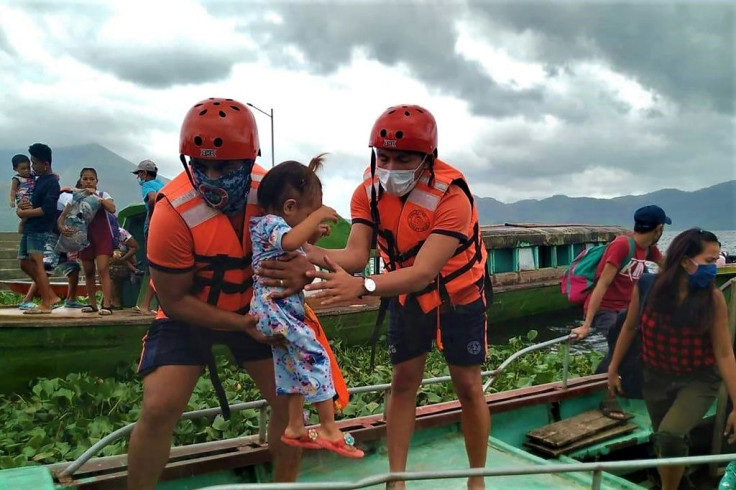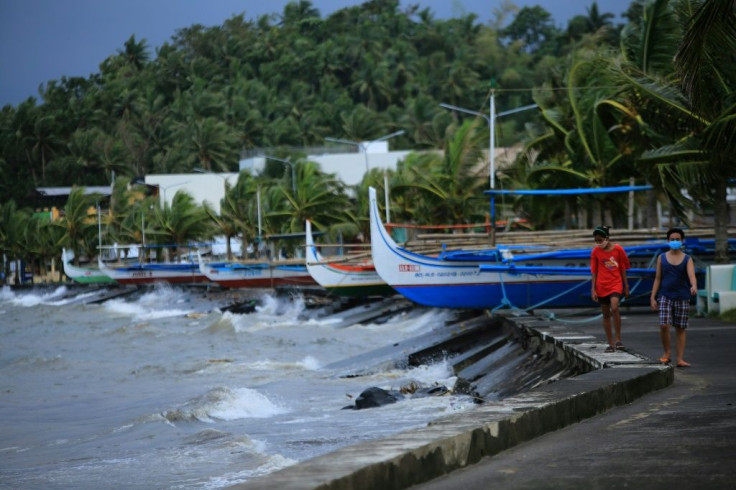Philippines Evacuates Nearly 1 Million As Typhoon Goni Nears
Nearly a million people in the Philippines were evacuated from their homes Saturday as the most powerful typhoon of the year so far barrelled towards the country, with authorities warning of "destructive" winds and flooding.
Typhoon Goni is expected to slam into Catanduanes Island Sunday morning with wind speeds of up to 205 kilometres per hour (127 miles per hour) before crossing the main island of Luzon, the state weather forecaster said.

It comes a week after Typhoon Molave hit the same region of the natural disaster-prone archipelago, killing 22 people and flooding low-lying villages and farmland, before crossing the South China Sea to Vietnam.
"It looks like we will have really strong winds, increasing the chances of widespread flooding and landslides," Mark Timbal, spokesman for the National Disaster Risk Reduction and Management Council, told local broadcaster ABS-CBN.
"Storm surges are imminent on our east coast. We are monitoring Mayon and Taal volcanoes for possible volcanic mud flows."

Civil Defense chief Ricardo Jalad said "almost a million" people had left their homes in the Bicol region, which includes the southern part of Luzon and Catanduanes.
Authorities spent Saturday marshalling rescue vehicles, emergency response teams and relief goods ahead of the typhoon.

"Violent winds and intense rainfall" are expected that could trigger floods and landslides in an area of more than 20 million people, the weather service said.
There was a "high risk" of storm surges of more than three metres (10 feet) high along parts of the coast, it added.

Schools which have been empty since the start of the coronavirus pandemic are being used as emergency shelters as well as government-run evacuation centres and gymnasiums.
"Evacuating people is more difficult at this time because of Covid-19," Bicol regional civil defence spokesman Alexis Naz told AFP.
Mary Ann Echague, 23, and her family fled their home in the coastal city of Legazpi in Bicol to an inland primary school where they were sheltering in a classroom with several other families.
"We fear the wrath of the typhoon," said Echague, who was with her two children, parents and siblings. They had carried with them a portable stove, tinned meat, instant noodles, coffee, bread, blankets and pillows.
"Each time we're hit by a typhoon our house gets damaged, since it's made of wood and galvanised iron roofing," she said.
"We have always managed. We find a way to get by."
Hundreds of people have been left stranded after the coastguard ordered ferries and fishing boats into port in expectation of rough seas throwing up 15-metre waves.
Goni is expected to "weaken considerably" as it crosses Luzon and enters the South China Sea Monday morning, the state forecaster said.
The Philippines is hit by an average of 20 storms and typhoons every year, which typically wipe out harvests, homes and infrastructure, keeping millions of people perennially poor.
Its deadliest on record was Super Typhoon Haiyan, which unleashed giant waves on the central city of Tacloban and left more than 7,300 people dead or missing in 2013.





















